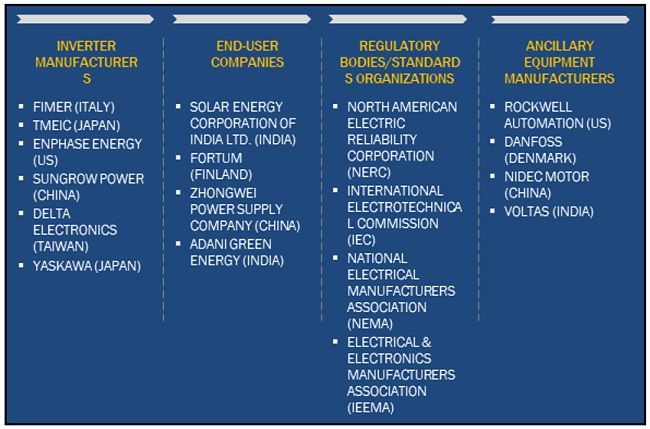According to a new market research report, the global inverter market is projected to reach USD 33.8 billion by 2027 from an estimated USD 16.3 billion in 2022, at a CAGR of 15.7% during the forecast period. The increase investments in the renewable energy sector and the government initiatives supporting the solar installations is expected to drive the demand for global Inverter market.

Key Market Players
The inverter market is served by a mix of large international players with operational presence across the globe and local players commanding a strong supply network in the domestic market. The leading players in the global inverter market include Huawei Technologies (China), Sungrow Power Supply (China), SMA Solar Technology (Germany), Power Electronics (Spain), FIMER (Italy).
Download PDF Brochure: https://www.marketsandmarkets.com/pdfdownloadNew.asp?id=263171818
Recent Developments
- In March 2022, Huawei Technologies has signed a strategic cooperation agreement with Meienergy Technology Co., Ltd for providing smart PV and energy storage system for the 1 GW utility PV plant and 500 MWh energy storage system in Ghana which is developed by Meienergy.
- In April 2022, Sungrow Power Supply has supplied string inverters to a 20.7 MW rooftop PV plant for electric vehicle manufacturing base of XPENG. The XPENG factory is now powered by 30% of clean electricity.
- In November 2019, SMA Solar Technology AG collaborated with South Korea-based LG Chem. Through this collaboration, the SUNNY BOY STORAGE battery inverters of SMA and RESU 10M batteries of LG Chem will be combined to form new home storage systems. The integration of SMA battery inverters with the RESU 10M batteries is expected to result in the development of integrated DC/DC converters, which can increase the operating voltage of batteries.
- In November 2021, FIMER made a contract with Indefol solar to supply inverter for Celadon sports & Resort Club project. this project comprises 1,677 solar panels across a total surface area of 4,800 square meters. powered by 6 of FIMER’s PVS-100-TL three-phase string inverter solution
This research report categorizes the inverter market inverter type, output power rating, output voltage, sales channel, connection type, end user, and region
On the basis of inverter type:
- Solar inverter
- Vehicle inverter
- Others (UPS and battery inverters)
On the basis of output power rating:
- Below 10 kW
- 10–50 kW
- 50–100 kW
- Above 100 kW
On the basis of output voltage:
- 100–300 V
- 300–500 V
- Above 500 V
On the basis of sales channel:
- Direct
- Indirect
On the basis of connection type:
- Standalone
- Grid-tied
On the basis of end user:
- Residential
- Automotive
- Photovoltaic (PV) Plants
- Others (Commercial, Industrial, and utilities)
On the basis of region:
- Asia Pacific
- Europe
- North America
- Middle East & Africa
- South America
The 100–300 V, by output voltage, is expected to be the largest and fastest inverter market during the forecast period
The 100–300 V holds the largest share of the global inverter market. The increase in the urbanization has increased the electricity demand in the various sectors. One such sector is residential sector where there is increased electricity demand. The AC voltage that is operated in this sector generally lies in between 100–300 V. Due to rise in the number of roof-top solar installations and as well as the power backup systems in households. This is fuelling the demand for inverters which are in connection with the PV systems and power backup systems in the range of 100–300 V in the market.
Ask Sample Pages – https://www.marketsandmarkets.com/requestsampleNew.asp?id=263171818
Asia Pacific is expected to dominate the global inverter market during the forecast period
The inverter market in Asia Pacific is witnessing significant developments in the renewable energy generation due to climate change actions taken by various countries in the region, which has supported the demand for inverters across countries of the region. China is among the fastest growing economies in the world and the increase automation in the country has tremendously increased power generation and consumption. These factors have made China one of the most lucrative markets for the power industry. Moreover, the government policies and schemes supporting solar energy generation in the country is expected to contribute to the growth of the inverter market in Asia Pacific. Policies like feed-in-tariff, and net metering have also been designed to support the growth of roof top solar installations. These factors are likely to create a huge demand for inverters in the region.


